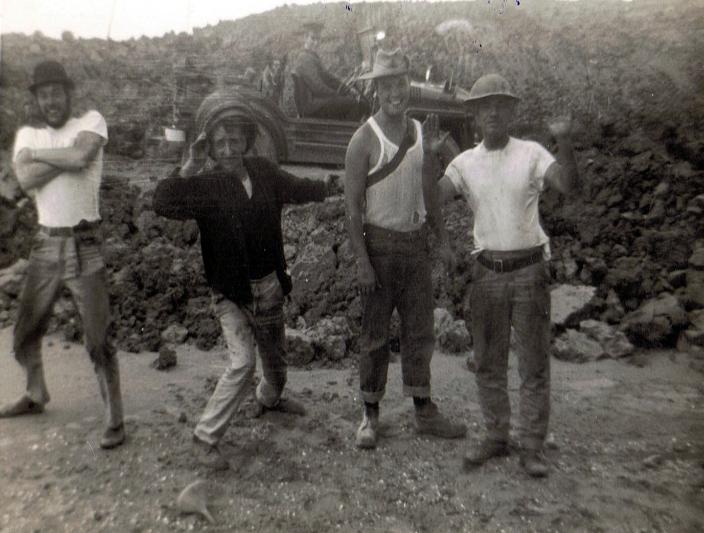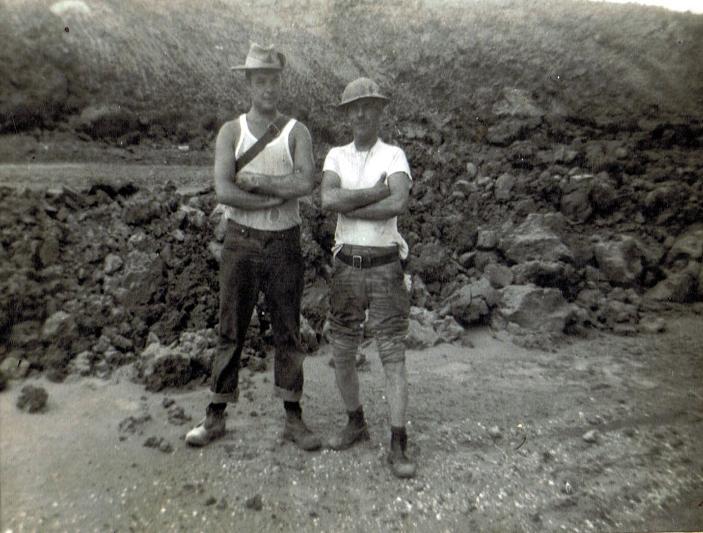









| MENU |

The History of Wirrals Motorway the M53
This is a road that turned out very differently to the original plan. The M53 was intended to start at Birkenhead
and run south to connect to the A55 near Queensferry. When it was finished as far as Bebington, the new
Ellesemere Port Bypass towards Chester connected in and was numbered M531, with the intention that it
would be a spur of the M53 when the motorway was finished, even though for the time being it was a direct
continuation. When it became clear the M53 would never be extended any further, the M531 was absorbed
into the mainline M53. It was then extended south from the end of what was M531, and joins the A55 east of
Chester.
Between junctions 4 and 5 the carriageways split where the M53/M531 junction should have been. Driving
through this junction is very strange: it's painfully clear that you're not on the same road any more, despite the
continuous number. Until a few years ago, there was even an unused flyover wide enough for a three-lane
motorway standing across the northbound carriageway. The Ellesmere Port Bypass feels like the little brother
of the road to the north of there. The M53 is also unusual in starting on a road with a number that's actually a
name - it begins at one of the Mersey Tunnels, whose road number is "(Tunnel)". This is confirmed by signs,
which read "(Tunnel)" in yellow as if it were any other number. Some early plans for the Kingsway tunnel show
it as part of the M53.
Meanwhile, further south, the Ellesmere Port bypass was originally opened as an unclassified road before
being hastily upgraded to motorway, explaining the closely spaced junctions and rather hairy corners. Some
sources indicate it was paid for by the oil companies and car manufacturers who have plants alongside the
route. It opened as the Hooton Industrial Road. The M53's original mission was to connect Liverpool and
Birkenhead, via the Mersey Tunnels, to Cheshire and north Wales. It was to do this by connecting up the
Tunnel to the A55 somewhere near Ewloe, south of the present Queensferry Bridge. It would probably have
had junctions through the Wirral built-up area, on the western side of Ellesmere Port and with the A5117
before a new bridge over the Dee to terminate on the A55.
It's logical to assume that the M56 extension would have brought it further west to the M53 had the
west-of-Chester plan gone ahead. By 1972, the Wirral section of the M53 was built to dual-three lane
standard and was open, with traffic whizzing happily along it from end to end. It finished at what we now
know as junction 5, which was then part of the Ellesmere Port bypass, an A-road built to relieve the town
centre some years earlier. Shortly before the M53 ended, the interchange was built ready for when the M53
would continue south.
By the late 1970s, the Ellesemere Port Bypass was carrying a large amount of traffic and, despite its very
closely spaced junctions, was upgraded by the Department of Transport to a motorway. Since it would
eventually become a spur of the completed M53, it was given a spur number, M531. This led to the odd
situation where the M53 simply turned into the M531, though it was quite clear what was going on since the
M53 dropped from three lanes to two and left the main carriageway of the motorway onto sliproads. What
happened next can hardly be described as an event, because nothing happened. To put it more precisely, the
M53 southern section didn't get built. In the mid 1980s, the Department gave up waiting, and renumbered the
M531 to the M53. This might have cut a corner for the government, but it left traffic going the long way round.
This is a road that turned out very differently to the original plan. The M53 was intended to start at Birkenhead
and run south to connect to the A55 near Queensferry. When it was finished as far as Bebington, the new
Ellesemere Port Bypass towards Chester connected in and was numbered M531, with the intention that it
would be a spur of the M53 when the motorway was finished, even though for the time being it was a direct
continuation. When it became clear the M53 would never be extended any further, the M531 was absorbed
into the mainline M53. It was then extended south from the end of what was M531, and joins the A55 east of
Chester.
Between junctions 4 and 5 the carriageways split where the M53/M531 junction should have been. Driving
through this junction is very strange: it's painfully clear that you're not on the same road any more, despite the
continuous number. Until a few years ago, there was even an unused flyover wide enough for a three-lane
motorway standing across the northbound carriageway. The Ellesmere Port Bypass feels like the little brother
of the road to the north of there. The M53 is also unusual in starting on a road with a number that's actually a
name - it begins at one of the Mersey Tunnels, whose road number is "(Tunnel)". This is confirmed by signs,
which read "(Tunnel)" in yellow as if it were any other number. Some early plans for the Kingsway tunnel show
it as part of the M53.
Meanwhile, further south, the Ellesmere Port bypass was originally opened as an unclassified road before
being hastily upgraded to motorway, explaining the closely spaced junctions and rather hairy corners. Some
sources indicate it was paid for by the oil companies and car manufacturers who have plants alongside the
route. It opened as the Hooton Industrial Road. The M53's original mission was to connect Liverpool and
Birkenhead, via the Mersey Tunnels, to Cheshire and north Wales. It was to do this by connecting up the
Tunnel to the A55 somewhere near Ewloe, south of the present Queensferry Bridge. It would probably have
had junctions through the Wirral built-up area, on the western side of Ellesmere Port and with the A5117
before a new bridge over the Dee to terminate on the A55.
It's logical to assume that the M56 extension would have brought it further west to the M53 had the
west-of-Chester plan gone ahead. By 1972, the Wirral section of the M53 was built to dual-three lane
standard and was open, with traffic whizzing happily along it from end to end. It finished at what we now
know as junction 5, which was then part of the Ellesmere Port bypass, an A-road built to relieve the town
centre some years earlier. Shortly before the M53 ended, the interchange was built ready for when the M53
would continue south.
By the late 1970s, the Ellesemere Port Bypass was carrying a large amount of traffic and, despite its very
closely spaced junctions, was upgraded by the Department of Transport to a motorway. Since it would
eventually become a spur of the completed M53, it was given a spur number, M531. This led to the odd
situation where the M53 simply turned into the M531, though it was quite clear what was going on since the
M53 dropped from three lanes to two and left the main carriageway of the motorway onto sliproads. What
happened next can hardly be described as an event, because nothing happened. To put it more precisely, the
M53 southern section didn't get built. In the mid 1980s, the Department gave up waiting, and renumbered the
M531 to the M53. This might have cut a corner for the government, but it left traffic going the long way round.




The following pictures were given to me by a friend of the family. It shows the men building the M53 motorway and posing
for pictures. i believe the construction team were from Sheffield.
for pictures. i believe the construction team were from Sheffield.